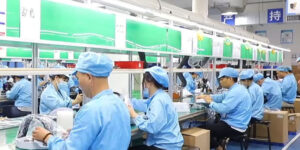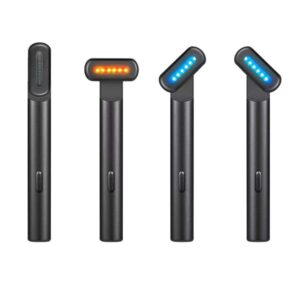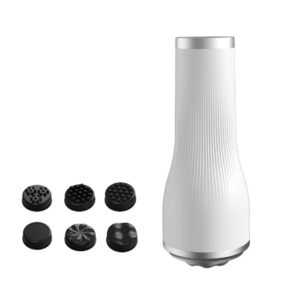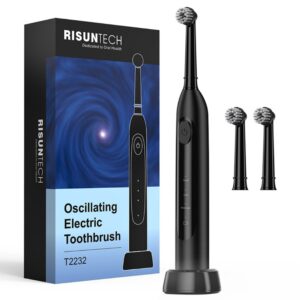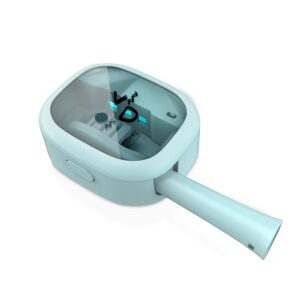Summary
RF EMS Face Massagers: Technology for Anti-Aging
Radio Frequency (RF) and Electrical Muscle Stimulation (EMS) face massagers have gained prominence in the beauty and wellness industry as effective non-invasive treatments aimed at combating signs of aging, such as sagging skin, loss of collagen, and wrinkles. These technologies are noteworthy for their ability to promote skin rejuvenation and enhance facial contours, making them popular among consumers seeking alternative solutions to surgical procedures. The increasing popularity of RF and EMS is fueled by a growing consumer awareness of skincare innovations and the influence of social media marketing, particularly among younger demographics.
RF technology works by delivering controlled heat energy deep into the dermis, stimulating collagen production and enhancing skin elasticity over time. This gradual process often requires multiple treatment sessions to achieve noticeable results, making it a long-term investment in skincare. In contrast, EMS utilizes electrical impulses to induce muscle contractions, which not only tone facial muscles but also improve skin circulation and texture, further contributing to an overall youthful appearance. Both methods can be utilized independently or in combination, leading to the development of RF-EMS hybrid devices that maximize anti-aging effects.
Despite their effectiveness, RF and EMS technologies are not without controversy. Concerns have been raised regarding the safety of RF exposure, particularly as the World Health Organization classifies RF radiation as “possibly carcinogenic to humans,” although substantial evidence linking RF therapy to increased cancer risk remains inconclusive. Additionally, improper use of these devices can lead to side effects such as burns or skin irritation, particularly among individuals with darker skin tones. Nevertheless, when conducted properly and under professional guidance, RF and EMS treatments are generally considered safe and well-tolerated.
The market for RF EMS face massagers is rapidly evolving, with a wide range of products available that cater to different skin concerns and consumer preferences. Influencer marketing and the rise of beauty technology have significantly contributed to market growth, particularly in regions like North America and Asia Pacific. As research continues to explore the long-term effects and efficacy of these technologies, RF and EMS face massagers remain at the forefront of innovative skincare solutions, appealing to those seeking effective and convenient anti-aging treatments.
Table of Contents
Background
Radio Frequency (RF) and Electrical Muscle Stimulation (EMS) technologies have emerged as popular methods in the beauty industry for combating signs of aging. These devices target common issues associated with aging skin, including sagging, loss of collagen, and the formation of wrinkles. As these concerns often vary based on genetics and lifestyle choices, the advancement of technology offers innovative solutions to address them effectively.
RF devices work by delivering heat energy into the skin, which stimulates collagen production and enhances skin elasticity and firmness over time. The results of such treatments are typically gradual and become noticeable after multiple sessions. In addition to RF, the incorporation of EMS can amplify these anti-aging effects through muscle stimulation, further promoting a youthful appearance by minimizing fine lines and wrinkles.
Among the products available on the market, various models have been specifically designed to cater to different areas of the face and body. For example, devices like the Glo24k Neck and Face LED Beauty Massager utilize a combination of heat and three types of LED light therapy—blue, green, and red light—each providing distinct benefits such as smoothing textured skin, calming irritation, and softening signs of aging. Additionally, facial massage techniques, often included in these treatments, have been shown to enhance the efficacy of anti-aging efforts, further underscoring the importance of mechanical stimulation in rejuvenation strategies.
As these technologies continue to evolve, they offer promising results that often outperform traditional cosmetic solutions, thereby garnering significant interest within both the beauty and medical communities.
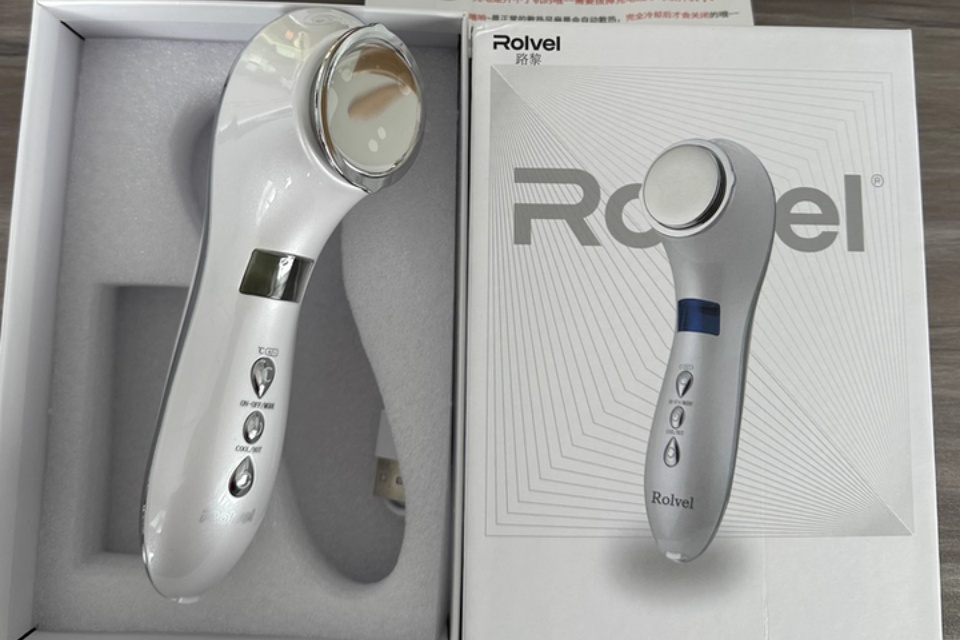
Radiofrequency (RF) Technology
Radiofrequency (RF) technology utilizes electromagnetic waves to generate heat within the skin, specifically targeting the dermis, which is the middle layer of the skin. This heating process is typically conducted at temperatures ranging from 122 to 167°F (50–75°C), promoting collagen contraction and stimulating the production of new collagen fibers, leading to tightened and lifted skin over time. RF therapy is commonly employed in aesthetic treatments, particularly for non-surgical skin tightening procedures.
Mechanism of Action
The RF technology works by delivering controlled heat deep into the dermis, which is achieved through the emission of radiofrequency waves. This method has been studied extensively to assess its impact on human health. While the World Health Organization has classified RF radiation as “possibly carcinogenic to humans,” similar to substances like coffee and body powder, conclusive evidence linking RF exposure to increased cancer risk remains lacking. In fact, the energy emitted by RF devices is significantly lower than that of high-energy radiation, such as X-rays.
Safety and Regulation
RF devices must be properly authorized under federal regulations before they can be marketed or imported into the United States. When performed by a certified surgeon, RF skin tightening procedures are generally considered safe; however, improper application may result in burns or other side effects. Individuals with darker skin tones are at a heightened risk for adverse effects from both laser and RF treatments.
Benefits of RF Therapy
The primary benefits of RF therapy include skin tightening and wrinkle reduction, as well as potential improvements in skin quality by stimulating collagen production, which may aid in fighting sun damage. Treatments are usually non-invasive, with sessions lasting around 30 minutes to an hour, and can be performed with minimal discomfort. The cost of RF therapy varies based on the treatment area and geographic location, typically ranging from $1,000 to $4,000.
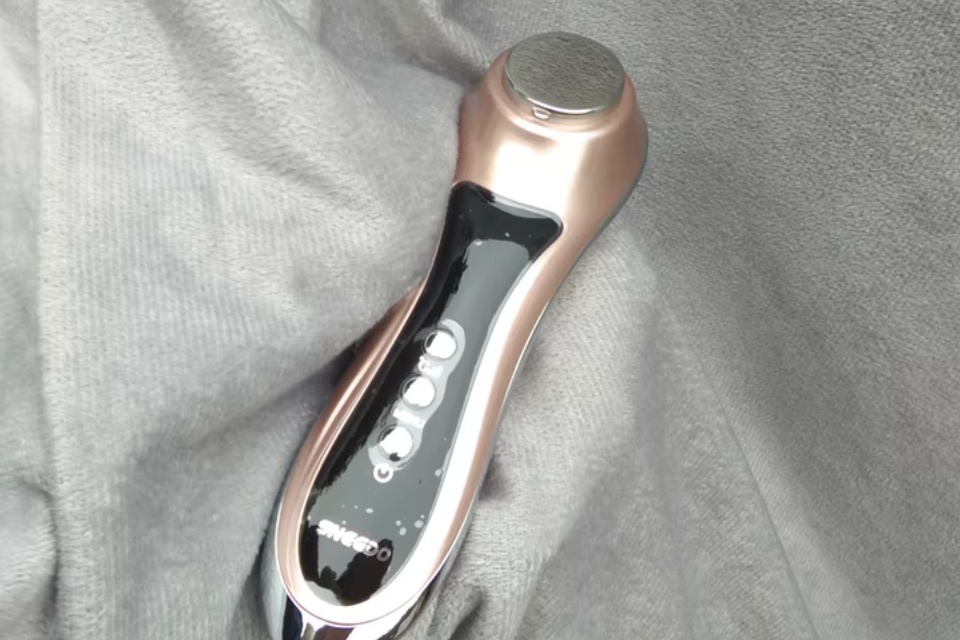
Electrical Muscle Stimulation (EMS) Technology
Electrical Muscle Stimulation (EMS) technology employs electrical impulses to stimulate muscle contractions, mimicking the effects of natural exercise. This technique has gained popularity in various applications, particularly in facial treatments, where it is used to enhance muscle tone, improve skin health, and achieve anti-aging effects.
Mechanism of Action
EMS devices deliver gentle electrical impulses to targeted facial muscles, causing them to contract and relax. This process not only strengthens and tones the muscles but also promotes improved circulation in the skin, leading to revitalized skin appearance and texture. The technology focuses on specific muscle groups, allowing for targeted sculpting and toning, similar to traditional strength training for the body.
Benefits of EMS
The application of EMS in anti-aging treatments has several notable benefits:
- Muscle Toning: Regular EMS sessions can significantly enhance muscle tone, leading to a firmer and more lifted facial appearance.
- Collagen Production: EMS stimulates the skin’s fibroblasts, promoting collagen synthesis, which contributes to skin elasticity and wrinkle reduction.
- Immediate and Cumulative Results: Users often report both immediate improvements in muscle tone and skin appearance, as well as cumulative benefits with continued use.
Safety and Side Effects
EMS technology is generally considered safe when used according to guidelines and with FDA-approved devices. Common side effects may include mild redness, swelling, and temporary muscle soreness, which typically subside shortly after treatment. However, it is crucial to avoid using unregulated devices, as they may pose risks such as burns and skin irritation.
Synergistic Effects with Other Technologies
When combined with other technologies such as Radiofrequency (RF), EMS can offer enhanced results. RF focuses on skin tightening and fat reduction, while EMS targets muscle enhancement, creating a comprehensive anti-aging solution. This dual-action approach can lead to a more significant transformation in both skin appearance and muscle tone, further appealing to those seeking effective anti-aging treatments.
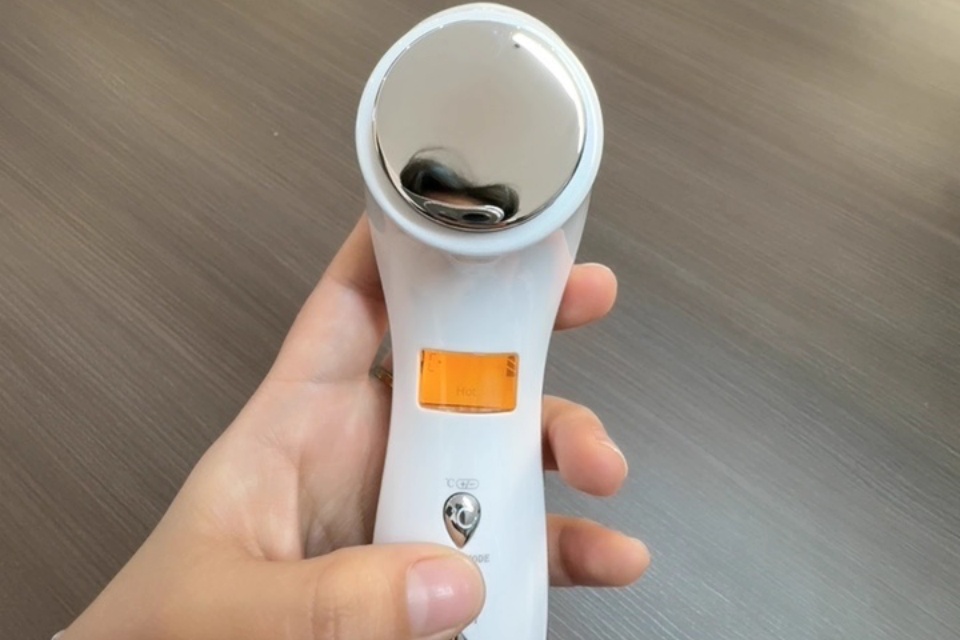
Comparison of RF and EMS Technologies
Overview of Technologies
Radio Frequency (RF) and Electrical Muscle Stimulation (EMS) technologies have emerged as popular options in non-invasive body and facial contouring treatments. Both technologies offer unique benefits, but they cater to different skin concerns and treatment goals. The integration of RF with EMS has led to the development of RF-EMS hybrids, which combine the advantages of both modalities for enhanced anti-aging results.
Mechanisms of Action
RF Technology
RF technology works by delivering heat energy to the skin’s deeper layers, stimulating collagen production and promoting tissue tightening. This process effectively addresses signs of aging such as sagging skin, loss of elasticity, and wrinkles. RF treatments have been clinically proven to provide significant anti-aging effects, often resulting in smoother and firmer skin.
EMS Technology
In contrast, EMS technology stimulates muscle contractions through electrical impulses. This process can enhance muscle tone and improve circulation, which can be beneficial for fitness augmentation and general skin vitality. While EMS can improve the appearance of skin, its primary focus is on muscle enhancement rather than direct skin tightening.
Treatment Costs
When comparing the costs associated with RF and EMS treatments, RF-EMS sessions typically range from $80 to $150, whereas basic EMS treatments are priced between $50 and $100 per session. This price differential reflects the advanced technology and results provided by RF-EMS treatments.
Maintenance and Results Longevity
RF-EMS Treatments
RF-EMS treatments generally require bi-monthly sessions to maintain results, making them a more convenient option for individuals seeking sustained benefits with less frequent appointments.
Pure EMS Treatments
In comparison, traditional EMS treatments typically necessitate monthly touch-ups to sustain effects, which may result in higher cumulative costs over time.
Ideal Candidates
The suitability of RF versus EMS varies based on individual skin concerns. Pure EMS is best suited for individuals looking to augment fitness or muscle tone, while RF-EMS is recommended for those addressing post-weight loss skin laxity or signs of aging.
Side Effects and Comfort
Both RF and EMS treatments are generally well-tolerated. RF treatments may cause temporary redness that typically resolves within a few hours, whereas traditional EMS may have a lower risk of thermal discomfort. As with any skin treatment, individual experiences may vary, and consulting with a qualified professional is advisable to ensure the best choice for personal skin needs.
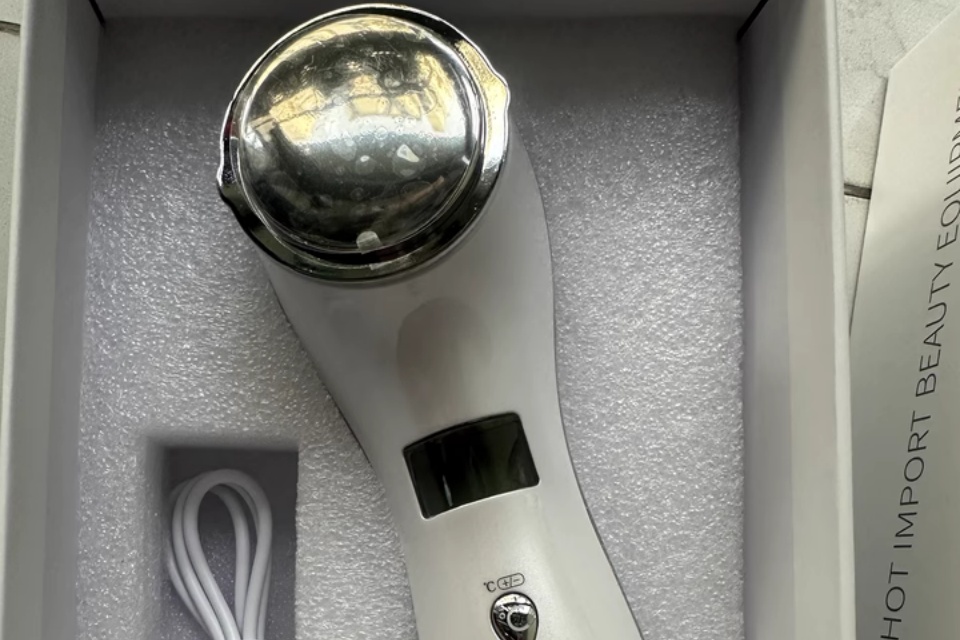
Market Overview
The market for RF EMS face massagers is a dynamic sector within the broader beauty and skincare industry, characterized by a competitive landscape of established global brands and emerging players. Leading companies are engaged in intense competition focused on product innovation, technological advancements, and strategic marketing to capture consumer interest. The market includes a diverse range of products, from manual tools to high-tech devices incorporating features such as microcurrent technology, vibration, and heat.
Key Market Trends
Consumer Demand and Influencer Impact
Social media and beauty influencers significantly shape the facial massager market by promoting these devices as essential components of skincare routines. Influencers frequently share personal testimonials, tutorials, and results, generating strong consumer demand, particularly among younger, beauty-conscious demographics. Platforms like Instagram, TikTok, and YouTube play crucial roles in enhancing product visibility and credibility through influencer endorsements, which further accelerates market growth.
Regional Insights
Asia Pacific
In 2023, the Asia Pacific region accounted for approximately 18% of the global revenue share in the facial massager market. This growth is fueled by a rising awareness of skincare and the popularity of beauty tech innovations, heavily influenced by Korean and Japanese beauty practices. Major players in this region include Panasonic and Foreo, alongside local brands like LG and Foryou, which provide affordable yet technologically advanced options.
North America
North America holds a substantial market share of around 75% within the region, driven by a diverse array of products and a growing emphasis on skincare and wellness. The demand for facial massagers in the U.S. is propelled by technological innovations, influencer marketing, and a focus on self-care, which positions these devices as essential tools for achieving youthful skin.
Distribution Channels
Specialty beauty stores represent a significant sales channel, capturing around 25% of the market share in 2023. These outlets offer curated selections of facial massagers and provide expert advice, enhancing the consumer shopping experience. Online sales are anticipated to grow at a CAGR of 11.5% from 2024 to 2030, as consumers increasingly seek detailed product information, reviews, and exclusive deals through digital platforms.
Product Segmentation
The facial massager market is segmented based on type, end use, application, and distribution channel. The key product types include manual and electric devices, catering to various consumer preferences and needs. Applications range from face lifting to anti-aging and skin-tightening treatments, appealing to a broad audience seeking non-invasive skincare solutions.
Scientific Research and Clinical Studies
Radiofrequency (RF) therapy is a noninvasive cosmetic procedure that has garnered attention for its potential skin-tightening benefits. Although proponents of RF therapy tout its advantages, scientific evidence supporting its efficacy remains limited. The primary benefit identified in studies is the procedure’s safety and minimal recovery time compared to surgical options for skin tightening.
Efficacy and Safety
Research indicates that RF therapy is generally safe and effective for treating mild to moderate signs of aging. Results can often be visible after a single session, with more pronounced improvements emerging after multiple treatments. However, while many users report positive outcomes, it is essential to consider individual variations in results, which may depend on factors such as age, lifestyle, and genetic predisposition to skin aging.
Long-term Effects
Despite the positive findings regarding short-term results, the long-term effects of RF therapy on skin tightening are still under investigation. There are calls for further research to clarify the potential health effects of radiofrequency treatment over extended periods. While some studies have shown promise, the overall scientific community agrees that additional, rigorous clinical trials are necessary to establish definitive benefits and risks associated with RF skin tightening.
Considerations for Candidates
Individuals interested in RF therapy should consult with a dermatologist or a board-certified plastic surgeon to assess their suitability for the procedure. Professionals can provide insights into the specific technologies available and what may work best for the individual’s skin type and conditions. Understanding the potential side effects, such as pain, redness, swelling, and skin darkening, is crucial for making informed decisions.


